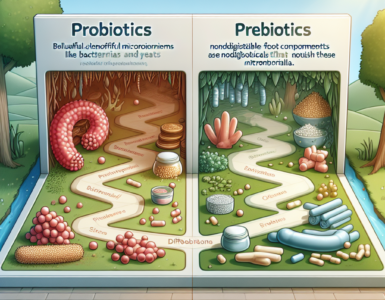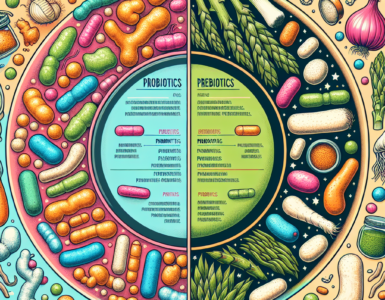In life, everyone is on a constant search for happiness. It’s an elusive emotion that can come and go. But what if there was a way to achieve lasting happiness? A kind of happiness that never fades away or diminishes with time. Is it even possible? The answer is yes! With these seven steps, you can achieve lasting happiness and live a fulfilling life.
Understanding the Concept of Lasting Happiness
Happiness is not just an emotion, it’s a state of being. The concept of lasting happiness is essentially being content with your life and feeling a sense of purpose. It’s a feeling that comes from within and lasts despite the external circumstances. It’s not just about experiencing joy, but rather living a life that is fulfilling and meaningful.
Defining Lasting Happiness
Lasting happiness is often defined as the feeling of contentment that comes from achieving a meaningful goal or living a life of purpose. It’s the ability to acknowledge and appreciate the good in your life while accepting and dealing with the bad. It’s a state of mind that allows you to be positive and hopeful even in difficult situations.
One way to achieve lasting happiness is to focus on your personal growth and development. This means setting goals for yourself and working towards them every day. When you have a sense of purpose and direction in your life, you feel more fulfilled and satisfied.
Another important aspect of lasting happiness is having strong relationships with others. When you have people in your life who love and support you, you feel a sense of belonging and connection. This can be achieved through spending quality time with family and friends, volunteering in your community, or joining social groups that share your interests.
The Difference Between Temporary and Lasting Happiness
Temporary happiness comes from external sources such as material possessions, success, or a good meal. It’s a happiness that fades quickly and needs to be constantly replenished. However, lasting happiness comes from within and is sustained over time. It’s not dependent on external factors, but rather on your mindset and outlook on life.
One way to cultivate a mindset of lasting happiness is to practice gratitude. This means taking time each day to reflect on the good things in your life and express appreciation for them. When you focus on the positive aspects of your life, you are less likely to dwell on the negative and more likely to feel happy and content.
Another important aspect of lasting happiness is taking care of your physical and mental health. This means eating a healthy diet, exercising regularly, getting enough sleep, and managing stress. When your body and mind are healthy, you have more energy and resilience to deal with the challenges of life.
In conclusion, lasting happiness is a state of being that is achieved through personal growth, strong relationships, gratitude, and self-care. It’s a happiness that comes from within and is sustained over time, rather than being dependent on external factors. By focusing on these key aspects of lasting happiness, you can live a more fulfilling and meaningful life.
Cultivating a Positive Mindset
The first step in achieving lasting happiness is to cultivate a positive mindset. It’s about focusing on the good in your life and developing a sense of gratitude for it. Here are some ways to cultivate a positive mindset:
Embracing Gratitude
Gratitude is the act of being thankful for what you have in your life. It’s about appreciating the small things that make life worth living. You can start by keeping a gratitude journal or simply taking a moment each day to reflect on what you’re thankful for.
Practicing Mindfulness
Mindfulness is the act of being present and fully engaged in the moment. It’s about focusing on the here and now and letting go of worries about the past or future. You can practice mindfulness through meditation, deep breathing exercises, or simply taking a few mindful moments throughout the day.
Overcoming Negative Thoughts
Negative thoughts can hold us back and prevent us from achieving lasting happiness. Learning to recognize and challenge negative thoughts is an important step in cultivating a positive mindset. You can do this by replacing negative thoughts with positive ones or reframing negative situations in a more positive light.
Building Strong Relationships
Humans are social creatures. Building positive relationships with others is essential for achieving lasting happiness. Here are some ways to build strong relationships:
The Importance of Social Connections
Social connections are essential for our well-being. They provide us with a sense of belonging and support. You can build social connections by joining social groups, volunteering, or simply reaching out to friends and family.
Joining a social group can be a great way to meet new people who share similar interests. Whether it’s a sports team, book club, or volunteer organization, being part of a group can help you feel connected to others. Volunteering is another way to build social connections while also giving back to your community.
Reaching out to friends and family can also help strengthen your relationships. Whether it’s a phone call, text, or email, taking the time to connect with loved ones can help you feel more connected and supported.
Developing Effective Communication Skills
Effective communication is key to building strong relationships. It’s about listening actively and expressing yourself clearly. You can develop effective communication skills by practicing active listening, being open and honest, and seeking to understand others.
Active listening involves paying attention to what the other person is saying and responding in a way that shows you understand. This can involve asking clarifying questions or summarizing what the other person said. Being open and honest means expressing your thoughts and feelings in a respectful way. It also means being willing to listen to feedback and make changes if necessary.
Seeking to understand others involves trying to see things from their perspective. This can involve asking questions to gain a better understanding of their thoughts and feelings. It also means being willing to compromise and find solutions that work for everyone.
Setting Boundaries and Maintaining Balance
Setting boundaries and maintaining balance in your relationships is essential for your well-being. It’s about finding a healthy balance between giving and receiving and establishing clear boundaries around your time and energy. You can do this by being assertive, saying no when necessary, and prioritizing self-care.
Being assertive means standing up for yourself and expressing your needs in a clear and respectful way. It also means being willing to say no when you need to. Prioritizing self-care means taking care of your physical, emotional, and mental health. This can involve getting enough sleep, eating well, exercising, and taking time for activities you enjoy.
Establishing clear boundaries around your time and energy can also help you maintain balance in your relationships. This can involve setting limits on how much time you spend with certain people or how much energy you devote to certain activities. It also means being willing to say no when you need to.
By building strong relationships, you can improve your well-being and find greater happiness in life. Whether it’s through social connections, effective communication, or setting boundaries, there are many ways to build and maintain positive relationships with others.
Pursuing Personal Growth and Self-Improvement
Personal growth and self-improvement are essential for achieving lasting happiness. It’s about finding a sense of purpose and meaning in your life. Here are some ways to pursue personal growth and self-improvement:
Setting Meaningful Goals
Setting meaningful goals gives us a sense of purpose and direction. It’s about identifying what is important to us and working towards it. You can set meaningful goals by identifying your values, writing them down, and breaking them down into achievable steps.
For example, if one of your values is to be physically fit, you can set a goal to run a 5K race in six months. To achieve this goal, you can break it down into smaller steps such as running for 20 minutes a day, gradually increasing your distance and speed, and finding a running buddy for motivation and support.
Embracing Lifelong Learning
Lifelong learning is essential for personal growth and self-improvement. It’s about embracing new experiences, learning new skills, and constantly seeking to expand our knowledge. You can embrace lifelong learning through reading, taking courses, or simply trying new things.
For instance, if you have always been interested in photography, you can take a photography course to learn the basics. You can also read books on photography techniques, attend photography exhibitions, and practice taking photos on your own. By embracing lifelong learning, you can discover new passions, challenge yourself, and improve your overall well-being.
Overcoming Challenges and Adversity
Challenges and adversity are a natural part of life. Learning to overcome them is essential for personal growth and self-improvement. You can do this by reframing challenges as opportunities for growth, seeking support when necessary, and being resilient in the face of adversity.
For example, if you experience a setback at work, you can reframe it as a learning opportunity. You can seek feedback from your colleagues or supervisor, identify areas for improvement, and develop a plan to address them. You can also seek support from a mentor or coach who can provide guidance and encouragement.
Being resilient in the face of adversity is also important for personal growth and self-improvement. Resilience means bouncing back from setbacks and continuing to pursue your goals despite obstacles. You can build resilience by practicing self-care, developing a growth mindset, and cultivating a strong support network.
Conclusion
Pursuing personal growth and self-improvement is a lifelong journey that requires commitment, effort, and a willingness to step outside of your comfort zone. By setting meaningful goals, embracing lifelong learning, and overcoming challenges and adversity, you can achieve a sense of purpose and fulfillment in your life.
Conclusion
These seven steps are essential for achieving lasting happiness. By cultivating a positive mindset, building strong relationships, and pursuing personal growth and self-improvement, you can live a fulfilling and meaningful life. Remember, lasting happiness comes from within and is sustained over time. It’s not about instant gratification, but rather a sense of contentment and purpose that lasts a lifetime.










